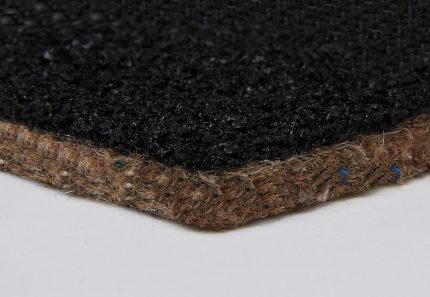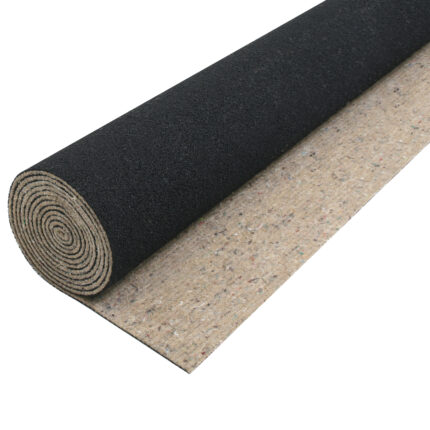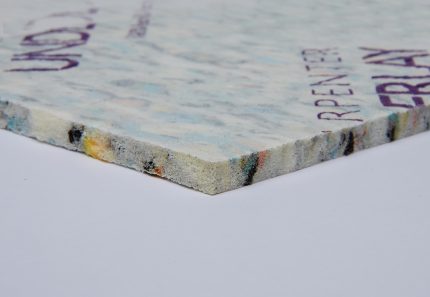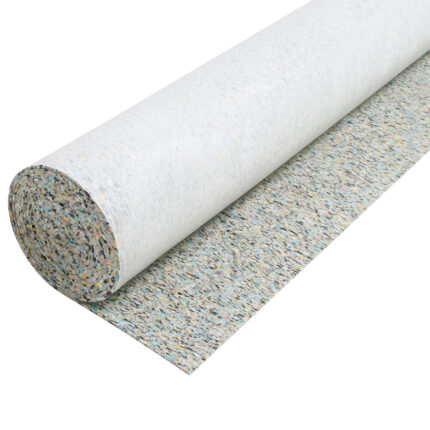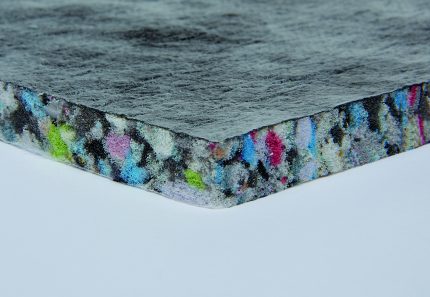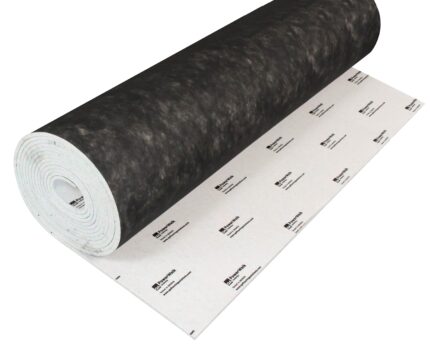Acoustic Carpet Underlay
An acoustic underlay, also known as a soundproof underlay, is great for eliminating the travel of airborne or impact noise. QA Flooring uses the best material on the market to maximise sound absorption, whilst also ensuring to add comfort and support for your floor, ensuring it lasts longer.
Made for use specifically with carpets, QA Flooring’s acoustic carpet underlay assortment will meet a range of needs and standards, whether it be an underlay for enhancing a luxury carpet, or one that ensures landlords meet the impact noise reduction necessary to meet Part E of building regulations. QA Flooring has your acoustic soundproofing solutions.
Learn more about Acoustic Carpet Underlay
An acoustic underlay, also known as a soundproof underlay, is great for eliminating the travel of airborne or impact noise. QA Flooring uses the best material on the market to maximise sound absorption, whilst also ensuring to add comfort and support for your floor, ensuring it lasts longer.
Made for use specifically with carpets, QA Flooring’s acoustic carpet underlay assortment will meet a range of needs and standards, whether it be an underlay for enhancing a luxury carpet, or one that ensures landlords meet the impact noise reduction necessary to meet Part E of building regulations. QA Flooring has your acoustic soundproofing solutions.
An acoustic underlay is a material layer that you place beneath your flooring to dampen two types of noise – airborne and impact noise.
- Impact Noise Reduction – Impact noise refers to the noise made by things coming into contact with the floor. This creates sound vibrations within the floor itself, requiring the structure of the acoustic underlay to allow for sound absorption rather than acting as a barrier.
- Airborne Noise Reduction – Airborne noise refers to the sound transmitted through the air, such as conversation or TV noise. The material will act as a barrier against airborne sound rather than an absorbent.
An acoustic underlay also achieves a decoupling effect amongst its soundproofing underlay, acting as a layer of separation between the carpet and the subfloor.
The following are the elements that will allow you to choose the best acoustic underlay to reduce airborne noise:
- Material – High-mass materials (dense) are considered superior for blocking airborne sounds. For example: rubber. The best way to find the most dense material is to compare the kilograms per cubic meter.
- Thickness – Thickness alone will not reduce airborne noise. You must pair thickness with density for the best defence against airborne sounds.
- Multiple Layer Construction – Some underlays are made up of several different materials, which provide several layers of decoupling to reduce airborne noise.
If you want to effectively reduce airborne noise, it’s important to understand that a soundproofing underlay is not the end-all-be-all, but it is highly effective.
Impact Insulation Class is a standardised rating concerning the volume of impact noises against the floor. The higher the rating, the higher the impact sound reduction.
To get a reference for IIC, concrete floors are around 25-30, meaning they are loud floors that don’t muffle impact noise. A carpeted floor has an IIC of 50, standing up well against impact noise. Finally, at 65+, now you’re reaching the IIC levels of a carpet with a carpet underlay. Impact noise is the only thing affected by IIC, meaning you should never expect any other noise reduction other than impact sound reduction.
Yes. It’s possible to install an acoustic underlay to ensure floor soundproofing. For flooring such as carpet, this may be the easiest underlay to install.
If you want to install carpet acoustic insulation, consider the following:
- Complex Spaces – Rooms that have many angles, curves or obstacles may be tricky for novices to DIY. In these situations, it may be better to call a professional for your soundproofing solution.
- Warranty – It’s common for acoustic underlays to come with warranties. DIY installations may void the warranty for your underlay.
- Time Constraints – Aside from the guarantee you get from a professional, you are also guaranteed to be a lot slower. Considering applying an underlay takes a while even for a professional, understand that the project could easily span across many hours or even days.

